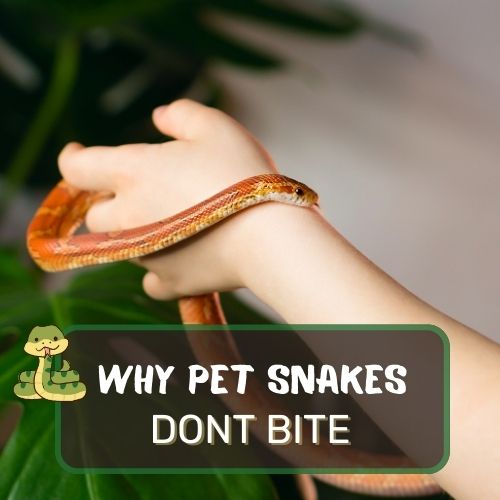
“Do pet snakes bite?” is a question that has intrigued many, from potential reptile enthusiasts to the merely curious.
This article delves deep into the world of pet snakes, debunking myths and shedding light on their often misunderstood behavior.
We’ve explored various factors, from the snake’s domestic environment to their inherent nature, to provide a comprehensive answer.
By diving into this read, you’ll gain insights into snake behavior, understand the reasons behind their actions, and learn how to foster a harmonious relationship with these fascinating creatures.
Whether you’re considering getting a pet snake or simply wish to expand your knowledge, this article promises a wealth of information.
Table of Contents
- 1 Why pet snakes don’t bite (Short Answer)
- 2 Overview of Pet Snakes and Their Behavior
- 3 Addressing the Common Fear of Snake Bites
- 4 Understanding Pet Snake Behavior
- 5 Reasons Why Pet Snakes Might Bite
- 6 Ball Python Bites: A Case Study
- 7 Preventing Snake Bites
- 8 What to Do If Bitten by a Pet Snake
- 9 Choosing the Right Snake as a Pet
- 10 Final Word
- 11 FAQ
Why pet snakes don’t bite (Short Answer)
Pet snakes typically don’t bite because they are accustomed to a domestic environment where they feel secure and well-fed. In the wild, snakes might bite as a defense mechanism or to capture prey. However, in a home setting, these survival instincts are less pronounced. With regular handling, pet snakes become familiar with their owners, reducing the likelihood of defensive reactions. Furthermore, snakes are more reactive than proactive; they usually respond to perceived threats rather than initiating aggression. By understanding and respecting their behavior, boundaries, and needs, snake owners can foster trust, ensuring a harmonious relationship with their reptilian companions.
Overview of Pet Snakes and Their Behavior

Pet snakes, often misunderstood and sometimes feared, are fascinating creatures that have found a place in the hearts and homes of many enthusiasts. Contrary to popular belief, these reptiles aren’t the cold-blooded monsters some make them out to be.
In fact, many snake species are known for their docile nature and reluctance to bite, especially when kept as pets.
When we talk about snake behavior, it’s essential to understand that snakes, like all animals, have evolved over millions of years. Their primary behaviors revolve around survival – finding food, avoiding predators, and reproducing.
In the wild, a snake might bite as a defense mechanism or to capture prey. However, in a domestic setting, where they’re well-fed and safe, the need to bite diminishes.
For instance, consider the ball python, a favorite among snake enthusiasts. Known for its gentle demeanor, it’s often referred to as the “puppy of the snake world.”
When threatened, instead of biting, it’s more likely to curl into a tight ball, hence its name.
Addressing the Common Fear of Snake Bites
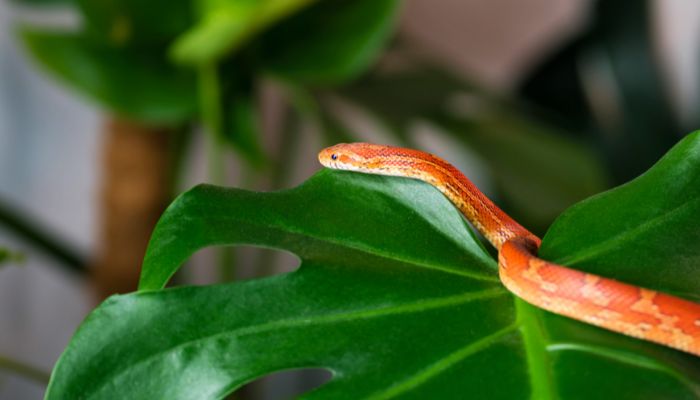
The fear of snakes, or Ophidiophobia, is one of the most common phobias worldwide. But where does this fear stem from? Often, it’s a mix of cultural beliefs, personal experiences, and, quite frankly, misinformation.
The idea that all snakes are out to bite us is a myth that’s been perpetuated for generations.
Let’s take a moment to analyze this. Imagine you’re a snake, a creature without arms or legs, and a giant (from your perspective) decides to pick you up. Your first instinct? Probably fear. Biting, for a snake, is often a last resort.
It’s their way of saying, “I’m scared, and I don’t know what you’re going to do to me.” In many cases, pet snakes bite out of fear or because they mistake a hand for food, especially if it smells like their typical prey.
Remember the earlier example of the ball python? If you were to suddenly grab it, it might get scared. But if you approach it slowly, letting it get your scent, and handle it gently, the chances of it biting are minimal.
Moreover, with proper care, understanding, and regular handling, pet snakes can learn to recognize their owners. Over time, they become more accustomed to human interaction, further reducing the likelihood of bites.
Understanding Pet Snake Behavior
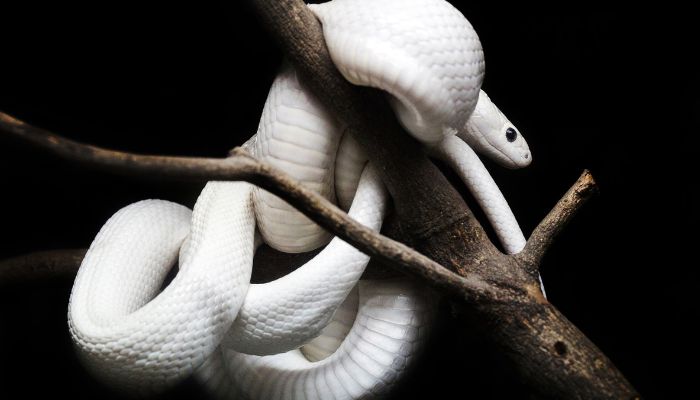
When it comes to pets, each animal, be it a furry feline or a slithering snake, has its unique set of behaviors. Understanding these behaviors is the key to a harmonious relationship with our pets.
Comparison with Other Pets like Cats, Dogs, and Birds
Think about a cat. Ever noticed how a cat’s tail flicks when it’s agitated? Or how a dog might wag its tail when happy and excited? Birds, too, have their ways, often puffing up their feathers when they feel threatened.
Similarly, snakes have their behavioral cues, though they might be subtler and less familiar to most people.
For instance, a dog might growl when threatened, while a snake might hiss. A bird might fly away when scared, while a snake might retreat or coil up.
Just as you wouldn’t approach a hissing cat, it’s wise to be cautious around a hissing snake.
Importance of Recognizing Snake Body Language
Recognizing a snake’s body language can be the difference between a peaceful interaction and an unexpected bite. When a snake feels threatened, it might coil itself into an ‘S’ shape, preparing to strike.
On the other hand, a relaxed snake, exploring its surroundings with flicking tongue and extended body, is generally not in a defensive mode.
Another sign to watch for is the snake’s eyes. During their shedding phase, a snake’s eyes might turn a milky blue. This is a sign that their vision is compromised, making them feel more vulnerable and potentially more defensive.
Mention that Snakes Don’t Inherently Want to Attack
It’s a common misconception that snakes are always on the hunt, ready to strike. The reality is, snakes, especially pet snakes, don’t inherently want to attack. They’re more about self-preservation.
If they bite, it’s often out of self-defense or a case of mistaken identity (thinking a hand might be food).
In the wild, constantly attacking without reason would expose snakes to unnecessary risks. In a domestic setting, where they’re regularly fed and feel secure, the need to be aggressive diminishes even further.
With understanding and patience, snake owners can foster trust, ensuring that their scaly companion feels safe and understood.
Reasons Why Pet Snakes Might Bite

While pet snakes are generally docile, there are certain situations where they might feel the need to bite.
Understanding these reasons can help snake owners avoid unexpected incidents and ensure a peaceful coexistence with their reptilian companions.
Mistaking Hands for Food
One of the most common reasons for a pet snake to bite is the confusion between hands and food.
Importance of Washing Hands to Remove Food Smells
Just as we humans rely heavily on our sense of sight, snakes depend on their sense of smell. Their tongues, constantly flicking in and out, are collecting particles from the air to analyze them.
If you’ve recently handled their food or any other animal, the lingering scent can be misleading. Washing hands thoroughly before handling your snake is crucial.
It helps in removing any smells that might confuse the snake into thinking your hand is its next meal.
Instances When Hands Smell Like Other Pets or Prey
It’s not just the scent of their specific prey that can trigger a bite. If you’ve been petting a hamster, a bird, or even another reptile, those scents can be intriguing or alarming to a snake.
Always be mindful of what you’ve touched before reaching into your snake’s enclosure.
Feeling Threatened or Defensive
Snakes, despite their sometimes fearsome reputation, can feel threatened quite easily, especially in unfamiliar situations.
Snake’s Perception of Sudden Movements as Threats
Imagine being in a deep sleep and someone suddenly shaking you awake. Your first reaction would probably be shock or fear. Similarly, sudden movements can startle snakes.
To them, a fast-moving hand might resemble a predator, triggering a defensive bite.
Recognizing Signs of a Stressed Snake
A stressed snake might exhibit behaviors like excessive hissing, coiling, or even trying to hide. Their body might become rigid, and they might maintain an ‘S’ shape, signaling they’re ready to strike.
Recognizing these signs and giving the snake some space can prevent potential bites.
Underlying Health Issues
Just like humans, snakes can have off days. They can feel irritable or defensive when they’re not at their best health.
Irritability During Shedding or Illness
Shedding is a natural process for snakes, where they shed their old skin to make way for new growth. During this period, their eyes can become cloudy, affecting their vision. This can make them feel more vulnerable and irritable.
Similarly, when they’re sick, they might not have the energy or patience for handling, making them more prone to lash out.
Signs of a Snake Not Feeling Well
A snake that’s not feeling well might refuse food, become lethargic, or hide more than usual. Physical signs might include mucus around the mouth, difficulty breathing, or visible wounds.
If your snake exhibits any of these signs, it’s essential to consult with a veterinarian specializing in reptiles.
Ball Python Bites: A Case Study
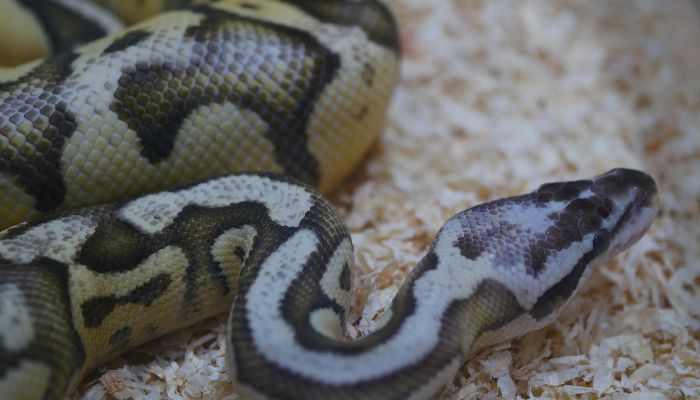
Ball pythons, with their docile nature and captivating patterns, have become one of the most sought-after reptilian pets. But like any creature, they too have their moments.
Let’s delve into the world of ball python bites, separating fact from fiction.
Overview of Ball Pythons as Popular Pet Snakes
Originating from West and Central Africa, ball pythons have taken the pet world by storm. Their relatively small size, combined with a generally calm demeanor, makes them an ideal choice for both novice and experienced snake enthusiasts.
Their name “ball” python is derived from their tendency to curl into a tight ball when they feel threatened, rather than striking out.
Description of What a Ball Python Bite Feels Like
If you’ve ever been bitten by a ball python, you’d know it’s not as dramatic as it sounds. Their teeth, designed to grip rather than tear, result in a bite that feels more like a series of tiny pinpricks.
While it might be startling, it’s rarely described as intensely painful.
Comparing the Pain to Common Injuries
To put it in perspective, think of the everyday injuries we’ve all experienced. Stubbing your toe on the edge of a table, getting a paper cut, or even the sting of splashing lemon juice on a small wound.
Most people would agree that these common injuries feel more uncomfortable than a bite from a ball python.
It’s essential to understand that while the bite might cause momentary discomfort, it’s not a searing pain that lingers.
Emphasizing the Rarity of Serious Ball Python Bites
Now, it’s crucial to note that serious injuries from ball python bites are extremely rare. These snakes don’t have venom, and their teeth aren’t designed to inflict deep wounds. Most bites result in superficial marks that heal quickly.
The key is to remain calm. If you jerk away suddenly, you risk a deeper cut or injuring the snake by inadvertently pulling out its teeth.
In the grand scheme of things, ball pythons are more lovers than fighters. They’d much rather explore, curl up in a warm spot, or simply hang out with their human companions than bite.
By understanding their behavior and ensuring they feel safe and secure, the chances of experiencing a bite become minimal.
Preventing Snake Bites
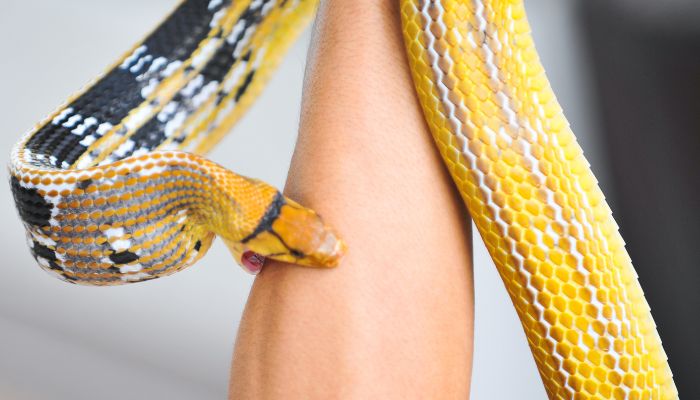
While we’ve established that pet snake bites, especially from species like ball pythons, are rarely serious, it’s always better to prevent them in the first place. Prevention not only ensures your safety but also keeps the snake stress-free.
Let’s explore some measures to ensure a bite-free experience with your slithery companion.
Proper Handling Techniques
Moving Slowly and Gently
Snakes, especially the ones kept as pets, are not aggressive by nature. However, sudden movements can startle them, triggering a defensive response. When you approach your snake, do so with slow and deliberate movements.
This gives the snake time to recognize you, reducing the chances of a defensive bite. Remember, to a snake, a fast-moving object can resemble a potential threat.
Avoiding Handling During Shedding or When the Snake is Hungry
There are times when even the most docile snake would prefer to be left alone. Shedding is one such period. As mentioned earlier, a snake’s vision is compromised during shedding, making them feel more vulnerable.
Similarly, a hungry snake might be more reactive, mistaking your hand’s warmth and movement for prey. It’s wise to be aware of these periods and handle the snake minimally during such times.
Understanding Snake’s Body Language
Recognizing Signs of Stress or Hunger
Just as a cat might purr when content or hiss when threatened, snakes too have their ways of communicating. A stressed snake might hiss, coil tightly, or try to retreat.
On the other hand, a hungry snake might become more active, especially during its usual feeding times. Recognizing these signs can help you gauge the best times to interact with your pet.
Importance of Not Startling the Snake
Always ensure that your snake is aware of your presence before you handle it. A simple technique is to gently tap the enclosure or use a soft object to touch the snake, ensuring it’s alert and aware.
This reduces the chances of the snake being taken by surprise, which could lead to an instinctual bite.
Ensuring Proper Living Conditions
Importance of a Secure and Comfortable Enclosure
A snake’s enclosure is its sanctuary. Ensuring it’s secure and comfortable is paramount to its well-being. A snake that feels safe in its environment is less likely to be stressed, reducing the chances of defensive bites.
Ensure the enclosure has a tight-fitting lid, appropriate substrate, and hiding spots where the snake can retreat and feel secure.
Monitoring Snake’s Health and Well-being
A healthy snake is a happy snake. Regularly monitor your snake for any signs of illness or distress. This includes checking for mites, ensuring it’s eating well, and monitoring its shedding process.
Any deviations from its usual behavior can be a sign of underlying issues. Addressing these promptly not only ensures the snake’s health but also reduces the chances of bites due to irritability or discomfort.
What to Do If Bitten by a Pet Snake
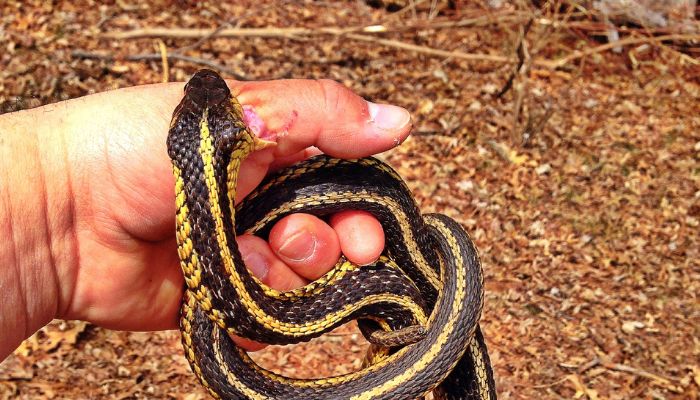
While we’ve discussed at length the preventive measures, it’s equally essential to know what to do if you ever find yourself on the receiving end of a snake bite.
Remember, most pet snake bites are not venomous and are usually more of a shock than a genuine medical emergency. However, it’s crucial to respond appropriately.
Immediate Steps to Take Post-Bite
- Do Not Panic: Your first instinct might be to pull away, but doing so could cause more injury to you or the snake. Instead, gently place the snake back in its enclosure.
- Assess the Bite: Check the bitten area. Most pet snake bites will look like a series of small puncture wounds.
Cleaning and Treating the Wound
- Clean the Area: Using warm water and mild soap, gently clean the bite area to prevent any infections.
- Apply an Antiseptic: Once cleaned, apply a mild antiseptic to further reduce the risk of infection.
- Cover the Wound: Use a sterile bandage to cover the bite. This keeps it clean and prevents any contaminants from entering the wound.
When to Seek Medical Attention
While most pet snake bites are harmless, it’s essential to be cautious. If you notice signs of an infection, such as swelling, redness, or pus, it’s crucial to consult a doctor.
Additionally, if you’re unsure about your snake’s species and whether it might be venomous, seek medical attention immediately.
Importance of Staying Calm During and After the Bite
A snake bite can be a jarring experience. However, panicking can exacerbate the situation. Staying calm not only ensures you handle the situation effectively but also reduces stress for the snake.
Remember, most bites are a result of the snake being scared or startled.
Choosing the Right Snake as a Pet

Embarking on the journey of snake ownership is exciting. However, it’s essential to choose the right companion to ensure a positive experience.
Mentioning Snake Species Known for Their Gentle Nature
Several snake species are renowned for their docile nature, making them ideal for first-time owners. Some of these include:
- Ball Pythons: As discussed earlier, they’re known for their gentle demeanor and are a favorite among many.
- Corn Snakes: These are hardy snakes, known for their vibrant colors and easy-going nature.
- King Snakes: Often praised for their ease of care and calm disposition.
Warning Against More Aggressive or Unpredictable Species
While many snakes make wonderful pets, some species are better left to experienced handlers due to their unpredictable or aggressive nature.
Species like the Reticulated Python or the Green Anaconda can grow very large and require specialized care.
Additionally, venomous species or those with a more aggressive disposition are not recommended for casual enthusiasts.
Final Word
Navigating the world of pet snakes can be both thrilling and daunting. However, as we’ve explored, the fears surrounding snake bites, especially from pet snakes, are often rooted in misconceptions.
It’s essential to reiterate that pet snake bites are rare. These creatures, often misunderstood, are not lurking with the intent to strike but are merely reacting to their environment.
Understanding and respecting a snake’s behavior, boundaries, and needs is the cornerstone of a harmonious relationship.

Just as with any pet, from dogs to fish, knowledge is power. The more you understand your snake, the more rewarding the experience becomes.
For those considering embarking on the journey of snake ownership, the key lies in being well-informed and prepared. With the right approach, a snake can be a fascinating, low-maintenance, and long-term companion.
So, embrace the adventure, but always with respect and understanding.
FAQ
Why don’t pet pythons bite?
Pet pythons, especially species like the ball python, are known for their docile nature. While they have the capability to bite, they usually don’t because they feel secure and well-fed in a domestic setting. Biting is often a last-resort defense mechanism.
Do pet snake bites hurt?
The pain from a pet snake bite varies depending on the snake’s size and the individual’s pain tolerance. Generally, bites from smaller pet snakes like ball pythons or corn snakes feel like a series of pinpricks. It might be startling, but it’s rarely described as intensely painful.
Do pet snakes recognize their owners?
While snakes don’t have the same emotional capacity as mammals, they can recognize and become familiar with their owner’s scent and presence. Over time, with regular handling, they can become more accustomed to their owner, leading to increased trust.
Do pet snakes like being touched?
Snakes don’t “like” or “dislike” being touched in the same way mammals might. However, with regular and gentle handling, they can become accustomed to human interaction. It’s essential to read the snake’s body language and ensure they’re comfortable during handling sessions.

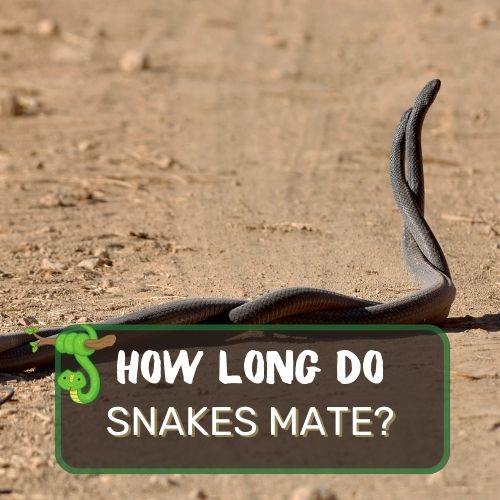
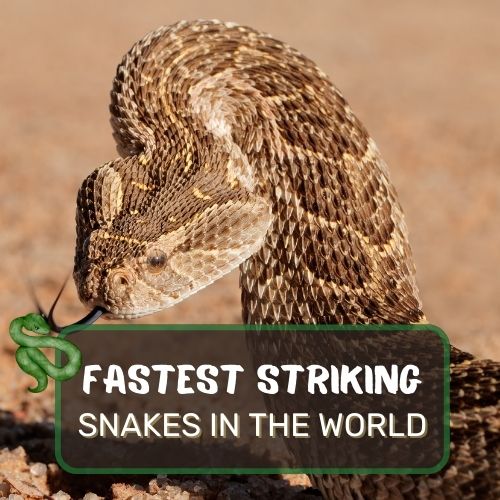
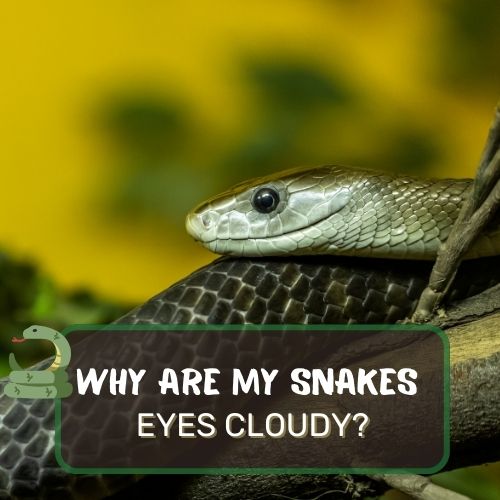
0 Comments